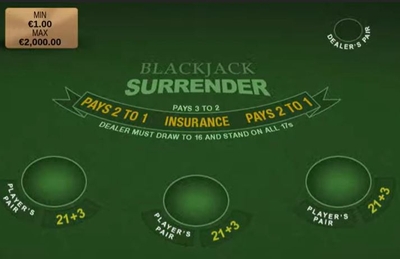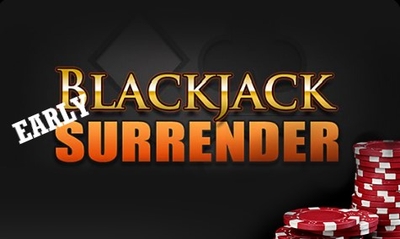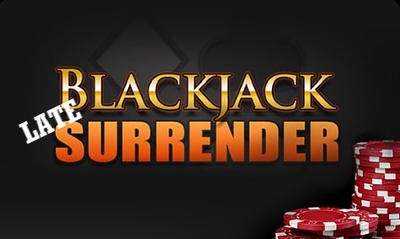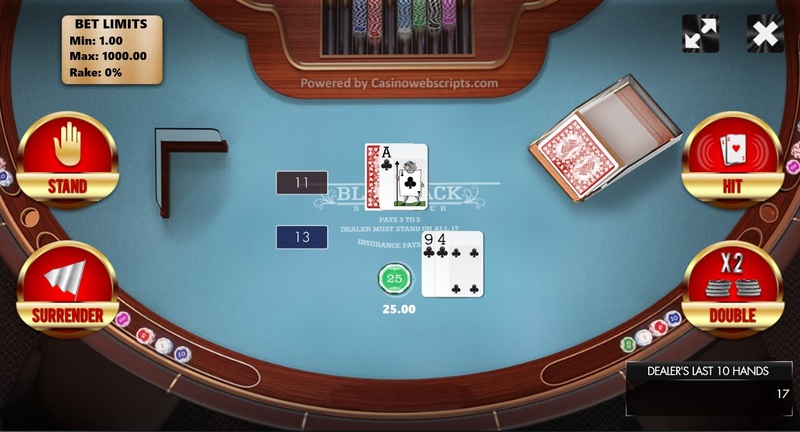 The ability to surrender in blackjack can be very useful in certain situations, where you are mathematically less likely to win the hand based on the cards that have been dealt so far.
The ability to surrender in blackjack can be very useful in certain situations, where you are mathematically less likely to win the hand based on the cards that have been dealt so far.
Surrendering your hand will cost you half of your stake, but if you only take the surrender option when the odds are not in your favour then, statistically, you will be saving yourself 50% more often than not. This is because if you played the hand out you would be more likely to lose than win, in which case you would lose 100% of your stake.
It’s not a rule that is too common in real life casinos, but you will find it more readily available online. It’s still fairly rare though, and that scarcity leads to the surrender rule being misunderstood and used sub optimally.
To make matters worse, there are actually two different types of surrender option; early and late. Early surrender is the most advantageous for the player when used correctly, and only one version of the rule will ever be available in each variation of the game.
To understand the difference between early and late surrender in blackjack, it’s probably easiest just to explain each one in turn, and in that way the difference will become apparent.
What is an Early Surrender?
 The most valuable option of the two, early surrender allows the player to salvage half of their wager immediately after the initial deal, even if the dealer is showing an Ace or a ten card.
The most valuable option of the two, early surrender allows the player to salvage half of their wager immediately after the initial deal, even if the dealer is showing an Ace or a ten card.
That means the player can surrender even before the dealer checks for a natural blackjack, and this is what makes it so advantageous.
A natural blackjack ends the hand straight away, in which case the player’s full stake is lost, so the ability to squirrel half of it away before that happens is most welcome.
The early surrender rule is so powerful that it knocks 0.63% off the house’s edge, although games that allow early surrender will often have also tweaked other rules to claw some of that back.
What is a Late Surrender?
 Although the same rules apply in terms of getting half of the stake back, with late surrender the dealer gets to check for blackjack before the player gets the option to surrender.
Although the same rules apply in terms of getting half of the stake back, with late surrender the dealer gets to check for blackjack before the player gets the option to surrender.
This means that if the dealer does have a natural blackjack then they take the player’s full stake, and they are not allowed to surrender.
Bearing in mind that a dealer showing an Ace will go on to have blackjack around 30% of the time, and that’s a lot of stakes lost before the surrender option becomes available.
The late surrender option may not be as favourable as the early surrender option, but it is still a nice option to have as you will see shortly.
What is the Difference Between the Two?
Hopefully this is already clear, but for the avoidance of doubt:
- Early Surrender – Player can surrender before dealer checks for natural blackjack.
- Late Surrender – Dealer checks for natural blackjack before the player has the chance to surrender.
It really is as simple as that.
When Should I Surrender in Blackjack?

The key thing about the surrender rule is that it has to be used optimally. That means you have to know exactly when to surrender and exactly when to let the hand run.
This is all decided using the mathematical probability of you winning based on the cards both you and the dealer are showing.
Early Surrender
| Dealer’s Up Card | Player’s Hand | Surrender? |
|---|---|---|
| Ace | Hard 5-7 or Hard 12-17 | Yes |
| Ace | Pair of 3’s, 6’s, 7’s, 8’s | Yes |
| Ten Value | Hard 14-16 | Yes |
Late Surrender
| Dealer’s Up Card | Player’s Hand | Surrender? |
|---|---|---|
| Ace | Any 15 | Yes* |
| Ace or Ten Value | Any 16 | Yes |
| Ace | Any 17 | Yes* |
*If dealer hits on soft 17 then ignore this rule.
In all other scenarios the hand should be played out as normal, using basic strategy and/or any other strategy tweaks you are using.
